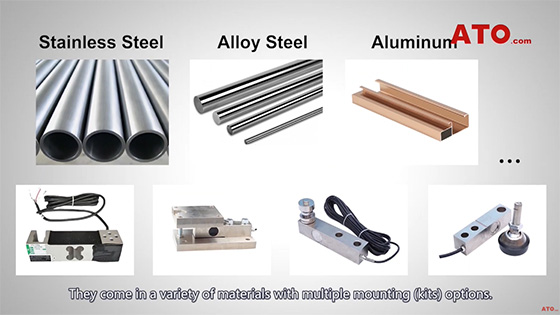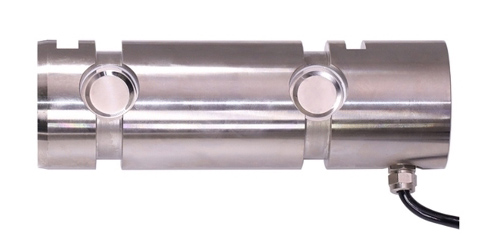How to Choose a Load Cell?
Load cells are available in a variety of shapes including S beam, canister, shear beam, bending beam, and double bending beam. They come in a variety of materials with multiple mounting kits options. With so many choices, we understand that selecting the correct load transducer for your application is a challenging task. But now we are here to help. In the following, we will give some tips and tell you how to choose the right load cell.

Load Cell's Environmental Adaptability
Once we know the application, we need to know the kind of environment where the weighing system is to be located. Consider whether the load cells will be operating in hot or cold temperatures. Consider what other substances will come in contact with your load cells. Are they in a wash down environment? Will they encounter corrosive liquids, gases, or solids? If so, you must consider the IP, or ingress protection rating of your load cells. And also check if your system is going into a hazardous environment.
Choose the Right Material
It is also a critical factor we have to keep in consideration in the selection process. As previously mentioned, load cells can be constructed from several types of materials, among which There are three kinds of materials that are commonly found on the market, namely, tool steel (alloy steel), aluminum & stainless steel.
- Tool steel: It is by far the most popular option for load cells. Compared to other materials used in load cell construction, the cost-to-performance ratio of tool steel elements is better. Tool steel load cells are relatively inexpensive, have a large capacity range and are best used in dry applications.
- Aluminum: It is usually used in single point, low capacity applications. As the least expensive of the three materials used to manufacture load cells, aluminum load cells are designed within low capacity ranges and are not supposed to be exposed to wet or chemical conditions.
- Stainless steel: Hermetically sealed, stainless steel has a higher resistance to moisture and chemical corrosion than tool steel or aluminum, making load cells of this type an ideal choice in damp or corrosive applications.

Consider the Type of Sealing of the Load Cell
Hermetically sealed technique involves a welded cover or sleeve that encapsulates the gauge pocket. This technique is generally used with stainless steel load cells as a stainless, hermetically sealed load cell should only be used in heavy wash down or chemical applications.
- Environmentally sealed, welded seal and hermetically sealed: These types of sealing will protect the load cell from damage caused by dust and debris and moderate humidity caused by splashing of water. In no way will the load cell be protected from immersion under water or being exposed to pressure cleaning.
- Welded sealed: This type of load cell is basically identical to a hermetically sealed cell except where the load cell cable comes out. Welded sealed load cells are for use where the cell may get wet on occasion, but are not intended for heavy wash down applications.
Explicit Capacity/Resolution Requirements
Be sure to select the capacity over the maximum operating load so that the load cell does not risk being overloaded and that it is not weighing at so close to full capacity that repeatability and accuracy suffer, and as well determine all extraneous loads (i.e. off-center loads) and moments prior to selecting the capacity. That being said, it's not recommended to select a capacity that is so much high that you cannot achieve the desired resolution.
Determine the Output Type of the Load Cell
Load cells work by converting force into proportional electrical signals. Therefore, its important to understand the electrical output type necessary for your application, which could include millivolt, voltage, current or digital output. You can find the excitation voltage data on our website for each of our load cells. If your PLC or DAQ requires analog output, digital load cells output or serial communication, you will need a load cell amplifier module.
Above, we have detailed some of the requirements for buying this product, and ATO shop also offers many high quality load cells, such as single point load cell, strain gauge load cell, compression load cell, tension load cell and so on. If you want to know more about the tips of choosing load cell, please click this video.

